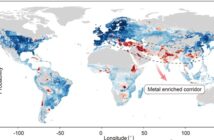When SY Cheer arrived last year, it ended a long wait for a new UKFM Group 1 variety on the Recommended List, quickly it has been joined by KWS Vibe.
KWS Vibe has been listed as a provisional Group 1 variety. Its status will be confirmed in the spring by UKFM after completing its analysis of commercial quantities of harvest 2024 grain samples.
In small-scale testing over the last three years, it has shown good grain and baking quality, with good protein levels recorded. Although yields are a little below that of stablemate KWS Zyatt, its good disease package and high untreated yield (89%) will be attractive to Group 1 growers.
New varieties bolster Group 3
Last year Bamford helped reverse the declining fortunes of UKFM Group 3 varieties. It too has competition with the arrival of KWS Solitaire and KWS Flute. Despite a slightly lower Hagberg Falling Number, KWS Solitaire still achieved UKFM Group 3 designation and yielded well in both treated and untreated trials. It is relatively weak-strawed which will require careful management.
KWS Solitaire has been rated as good for distilling, KWS Flute as medium, it is also a little behind on untreated yield.
BYDV resistant RGT Goldfinch gains approval
Five new UKFM Group 2’s make the list, including RGT Goldfinch from RAGT. With barley yellow dwarf virus (BYDV) and orange wheat blossom midge (OWBM) resistance it is likely to appeal to those who experience high aphid pressure.
It offers a very robust disease resistance so suits lower input systems. It also shows good baking quality but yields are a little lower than some.
RAGT’s arable technical manager Andrew Creasy suggests using genetics to prevent BYDV infection greatly simplifies crop management. “It removes the need to monitor and control aphid vectors for less than the cost of buying and applying a single pyrethroid spray, which is good news economically and environmentally.”
He also reminds that resistance to orange wheat blossom midge means growers can apply with confidence for the £45/ha payment under SFI for growing an arable crop without insecticide.
KWS Arnie has a very high treated yield, especially in the East and West regions, and good disease resistance.
Although KWS Equipe is slightly lower yielding in treated trials, it has very good grain quality and its untreated yield is the highest on the list. As both varieties show some limitations in baking quality, growers are advised to consult their grain merchant about market opportunities. KWS Newbie is very high yielding in the North region with good grain quality. While LG Shergar also has a very high yield in the North region and a high specific weight, its protein is a little lower.
Only two new feed varieties have been recommended this year, but both offer high yields.
RGT Hexton is a soft Group 4 with very high treated yield, especially in the North region (although this result is based on a small number of trials). It is rated medium for distilling and has good resistance to septoria tritici, although its untreated yield is lower.
KWS Scope is a hard Group 4 with very high yield, especially in the West region and comes with good disease ratings.
BYDV two-row tolerant barley
Five new varieties offer specific recommendations for tolerance or resistance to BYDV, a novel trait added to the RL in the last few years. With improved yields and disease resistance over the initial BYDV varieties, these are likely to appeal to more growers.
The new list includes two-row feed varieties with BYDV tolerance for the first time. Two-row feed Organa (from Senova) and LG Carpenter (from Limagrain) with six-row feed varieties Integral (from Agrii), Sixy (from Elsoms) and SY Kestrel (from Syngenta) are all new entrants.
Organa has a UK recommendation and offers high treated yields, especially in the East, and good disease resistance. LG Carpenter has an East and a West recommendation, with high treated yield in these regions and the highest untreated yield of any two-row on the list.
Three new six-row feed varieties feature BYDV tolerance or resistance. Conventional variety Integral offers high treated yield, especially in the East and West regions, with high untreated yield. Sixy is slightly lower yielding in the East and West regions, but higher yielding in the North region, although its untreated yield is disappointing.
Hybrid variety SY Kestrel offers BYDV resistance and has tolerance to wheat dwarf virus. It is very high yielding in the West region.
Other two-row feed recommendations include KWS Valencis, NOS Olena and Kitty (from Senova)
KWS Valencis and NOS Olena offer very high yields with good disease resistance.
Although Kitty is slightly lower yielding, it joins the one other variety on the list with resistance to Barley yellow mosaic virus strain 2 (BaYMV2). It also has a very high specific weight (72.7 kg/hl). The variety isn’t likely to gain universal appeal but it does provide some very likable traits.
Russo (from Agrii), KWS Heracalis and Rosemary (from Elsoms) and SU Arion (from Saaten Union) have all been given regional recommendations. For the East, Russo has very high treated and high untreated yields. For the North, KWS Heraclis and Rosemary offer very high treated and high untreated yields.
SU Arion has been recommended for the North and East regions, with the yield in the East region particularly high. Its high mildew disease rating will appeal to some growers.
Six-row feed hybrids stretch yield gap
Over recent years, the yield gap between six-row hybrids and two-row feed varieties has closed. However, two new six-row hybrid varieties for the UK have stretched that gap once more.
Inys (from KWS) is very high yielding, especially in the East and West regions, with a high untreated yield.
SY Quantock (from Syngenta) offers very high yield in the North and West regions with a high untreated yield.
Both have good lodging resistance and grain quality.




